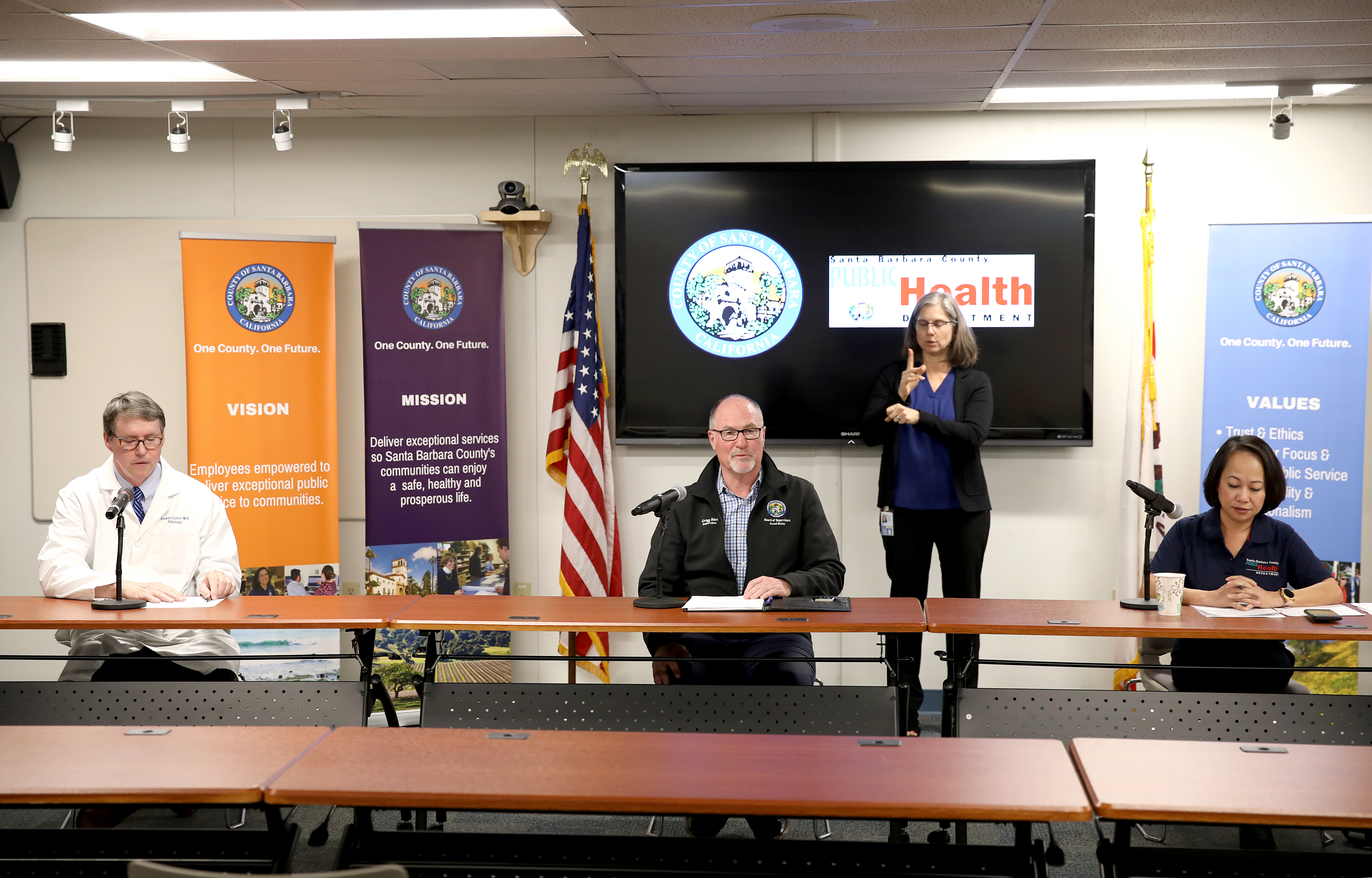Wednesday Evening: 26 Coronavirus Cases, 1 Patient Hospitalized
Geographic Details Provided for First Time

As of 4:30 this afternoon, 26 Santa Barbara County residents have tested positive for COVID-19, an increase of two from the previous day. Of those, one patient has been hospitalized, 19 are recovering at home, and six have recovered. No details were provided about the one patient hospitalized.
For the first time, public health officials have disclosed more specific details as to where the patients testing positive actually reside. Six live in Santa Maria, five in Orcutt, 10 in Santa Barbara, and five live in southern Santa Barbara County between Carpinteria, Summerland, and Montecito.
Van Do-Reynoso, head of the county’s Public Health Department, stressed the importance of social distancing and sheltering in place, stating such measures can reduce the infection rate from 70 to 30 percent. Dr. Stewart Comer, head of Cottage’s Health Labs, credited Supervisor Gregg Hart for connecting the public health effort to labs at UCSB endowed with chemicals needed to make the testing kits functional — known as reagents. The labs in question, Comer stated, provided Public Health officials fighting the virus with a supply of these reagents that will allow testing to proceed for another two weeks. Multiple reagents, he said, were needed for the testing kits to work.
Legal concerns about the violating the confidentiality of individuals has fueled the reluctance of county health officers to disclose anything but the most general details about where those testing positive resided. Prior to today, the only information given was the age bracket into which the patients fell and whether they lived in north or south county.
To date, roughly 500 tests have been administered. No information was available as to how many of those involved medical professionals, elderly individuals living in congregate care facilities, or inmates in the County Jail. Comer noted that while the disease is highly infectious, the strain confronted by medical professionals in Santa Barbara does not appear to be as virulent as the ones seen in New York City. He also noted there might be environmental complications — high population densities, for example — that pertain to New York, but not here.


